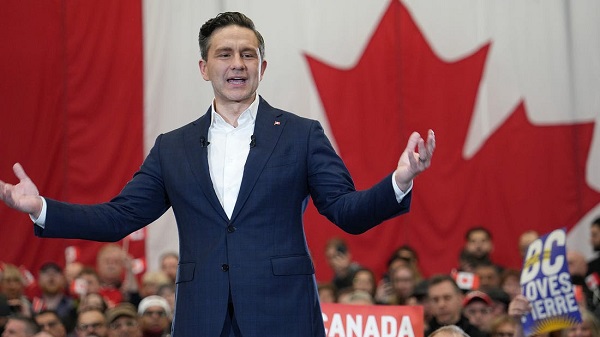Business
Does Income Inequality Matter?
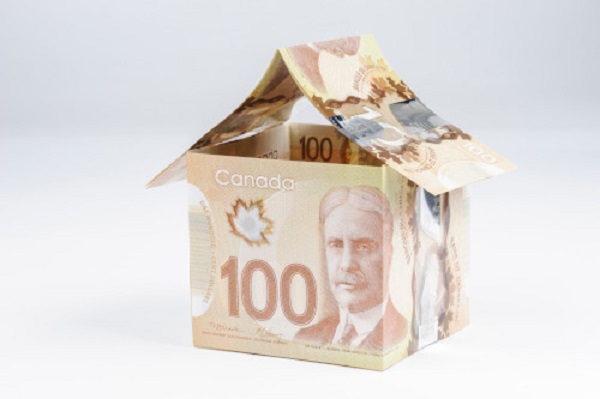
Super-high income taxes don’t increase government revenues. But can taxes be “smart”?
Reducing poverty and its harms is among the most urgent responsibilities of any modern government. But despite the claims of some activists, this particular problem has no obvious and easy solution. I’m going to suggest that targeting income inequality in particular is a waste of time.
First of all, income in Canada is actually not all that unequal. Income inequality is often measured by the Gini Coefficient. A Gini score of zero would represent total income equality, where everyone earns exactly the same amount. A score of one (or, sometimes, 100) represents perfect inequality, meaning one person has all the income, and everyone else has none.
The Audit is a reader-supported publication. To receive new posts and support my work, consider becoming a free or paid subscriber.
Statistics Canada data shows changes to the Gini Coefficient in Canada between 1976 and 2022:

Relatively speaking, those numbers are quite low and – when you ignore the weird COVID years – they also haven’t changed much since 1976. For comparison, the U.S. Gini coefficient in 2023 was 0.47, while (Communist!) China’s was 0.465 – both significantly higher than ours. The worst and best scores are, respectively, claimed by South Africa (.63) and Norway (.23).
But the real reason that talking about income inequality is an unnecessary distraction, is because there’s nothing you can do about it.
As I pointed out in a recent article, the 2 percent of Canadians whose assessed taxable incomes are above $250,000 contribute nearly 30 percent of all personal income tax revenue. They’re already clearly – and for the most part willingly – carrying far more than their share.
Ok. But why not slap the super-rich with a 90 percent marginal income tax? Well that’s been tried. The Beatles even recorded an angry song about it. But as far as I can tell, such taxes have always led to decreasing tax revenues. That’s because the people you’re targeting will either decide to earn less or simply move their businesses and assets to more tax-friendly countries – that often come with the added bonus of good weather.
If you’d ask me for my opinion, I’d say that the federal government could easily free up billions of dollars to address poverty by cutting waste. And a good first step in that direction would involve sharply decreasing the size of our bloated civil service.
How those extra funds could be better spent in a way that actually helps the poor isn’t a simple question. And it’s something you’d definitely want to get right on the first shot. Not to mention that some problems just can be solved with more money.
But in the unlikely event that you did find an expensive solution AND money freed up by new government efficiencies wasn’t enough, one might consider an intelligently designed wealth tax. Wealth taxes – which can take the form of property and estate taxes – have been used for centuries. The catch is that, if they’re poorly designed, they can be destructive. Just imagine a tax on real estate worth more than a million dollars that ends up wiping out seniors counting on the value of their homes to fund their retirements.
An OECD report from a few years back identifies a long list of developed countries whose wealth taxes largely failed to deliver significant revenue boosts. Those included Spain, Austria, Denmark, and Germany.
Norway, with a wealth tax worth as much as 1.5 percent of net wealth, was one of the report’s few success stories. But even they now seem to be having serious problems with compliance. Apparently, rich and industrious Norwegians are leaving the country in such high numbers that the government has imposed a punitive exit tax. I’m sure that’ll work out just great. (The Free Press recently published a piece on Norway’s problem.)
Nevertheless, if there is a universe where the words “smart” and “tax” can happily co-exist in a single sentence, then it’s more likely to work when you also find a way to include “wealth”, “balanced”, and “focused”.
The Audit is a reader-supported publication. To receive new posts and support my work, consider becoming a free or paid subscriber.
Invite your friends and earn rewards
If you enjoy The Audit, share it with your friends and earn rewards when they subscribe.
2025 Federal Election
Don’t double-down on net zero again
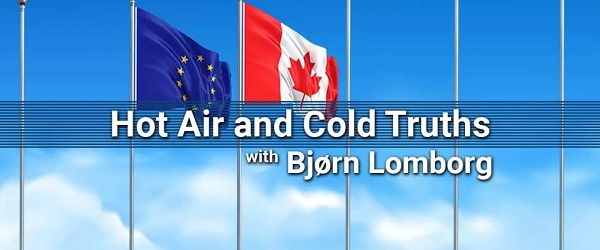
From the Fraser Institute
In the preamble to the Paris Agreement, world leaders loftily declared they would keep temperature rises “well below 2°C” and perhaps even under 1.5°C. That was never on the cards—it would have required the world’s economies to effectively come to a grinding halt.
The truth is that the “net zero” green agenda, based on massive subsidies and expensive legislation, will likely cost more than CAD$38 trillion per year across the century, making it utterly unattractive to voters in almost every nation on Earth.
When President Trump withdrew the United States from the Paris Climate Agreement for the first time in 2017, then-Canadian Prime Minister Justin Trudeau was quick to claim the moral high ground, declaring that “we will continue to work with our domestic and international partners to drive progress on one of the greatest challenges we face as a world.”
Trudeau has now been swept from the stage. On his first day back in office, President Trump signed an executive order that again begins the formal, twelve-month-long process of withdrawing the United States from the Paris Agreement.
It will be tempting for Canada to step anew into the void left by the United States. But if the goal is to make effective climate policy, whoever is Canada’s prime minister needs to avoid empty virtue signaling. It would be easy for Canada to declare again that it’ll form a “coalition of the willing” with Europe. The truth is that, just like last time, that approach would do next to nothing for the planet.
Climate summits have generated vast amounts of attention and breathless reporting giving the impression that they are crucial to the planet’s survival. Scratch the surface, and the results are far less impressive. In 2021, the world promised to phase-down coal. Since then, global coal consumption has only gone up. Virtually every summit has promised to cut emissions but they’ve increased almost every single year, and 2024 reached a new high.
Way before the Paris Agreement was inked, the Kyoto Protocol was once sold as a key part of the solution to global warming. Yet studies show it achieved virtually nothing for climate change.
In the preamble to the Paris Agreement, world leaders loftily declared they would keep temperature rises “well below 2°C” and perhaps even under 1.5°C. That was never on the cards—it would have required the world’s economies to effectively come to a grinding halt.
The truth is that the “net zero” green agenda, based on massive subsidies and expensive legislation, will likely cost more than CAD$38 trillion per year across the century, making it utterly unattractive to voters in almost every nation on Earth.
The awkward reality is that emissions from Canada, the EU, and other countries pursuing climate policies matter little in the 21st century. Canada likely only makes up about 1.5 per cent of the world’s emissions. Add together Canada’s output with that of every single country of the rich-world OECD, and this only makes up about one-fifth of global emissions this century, using the United Nations’ ‘middle of the road’ forecast. The other four-fifths of emissions come mostly from China, India and Africa.
Even if wealthy countries like Canada impoverish themselves, the result is tiny — run the UN’s standard climate model with and without Canada going net-zero in 2050, and the difference is immeasurable even in 2100. Moreover, much of the production and emissions just move to the Global South—and even less is achieved.

One good example of this is the United Kingdom, which—like Prime Minister Trudeau once did—has leaned into climate policies, suggesting it would lead the efforts for strong climate agreements. British families are paying a heavy price for their government going farther than almost any other in pursuing the climate agenda: just the inflation-adjusted electricity price, weighted across households and industry, has tripled from 2003 to 2023, mostly because of climate policies. This need not have been so: the US electricity price has remained almost unchanged over the same period.
The effect on families is devastating. Had prices stayed at 2003 levels, an average family-of-four would now be spending CAD$3,380 on electricity—which includes indirect industry costs. Instead, it now pays $9,740 per year.
Rising electricity costs make investment less attractive: European businesses pay triple US electricity costs, and nearly two-thirds of European companies say energy prices are now a major impediment to investment.
The Paris Treaty approach is fundamentally flawed. Carbon emissions continue to grow because cheap, reliable power, mostly from fossil fuels, drives economic growth. Wealthy countries like Canada, the US, and European Union members have started to cut emissions—often by shifting production elsewhere—but the rest of the world remains focused on eradicating poverty.
Poor countries will rightly reject making carbon cuts unless there is a huge flow of “climate aid” from rich nations, and want trillions of US dollars per year. That won’t happen. The new US government will not pay, and the other rich countries cannot foot the bill alone.
Without these huge transfers of wealth, China, India and many other developing countries will disavow expensive climate policies, too. This potentially leaves a rag-tag group led by a few Western European progressive nations, which can scarcely afford their own policies and have no ability to pay off everyone else.
When the United States withdrew from the Paris Agreement in 2017, Canada’s doubling down on the Paris Treaty sent the signal that it would be worthwhile spending hundreds of trillions of dollars to make no real difference to temperatures. We fool ourselves if we pretend that doing so for a second time will help the planet.
We need to realize that fixing climate change isn’t about sanctimonious summits, lofty speeches, and bluster. In coming weeks I’ll outline the case for efficient policies like innovation, adaptation and prosperity.
Business
Trump’s tariff plan replaces free trade with balanced trade. Globalists hate that.
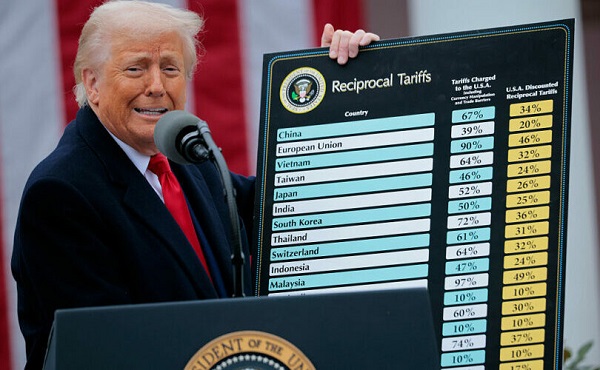
From LifeSiteNews
By Frank Wright
While globalists screech that Trump has descended into ‘madness,’ his ‘Liberation Day’ tariff plan that has shocked global markets is actually rooted in the combination of two economic theories that argue for ‘balanced’ trade over ‘free’ trade.
We are used to seeing the effects of Trump Derangement Syndrome in the blue-haired, red-faced hysterics who call the President “Orange Hitler.” Yet the introduction of tariffs on “Liberation Day” has seen the constituency of the differently-saned explode in a fit of rage at this “tariff madness.”
As global markets “plunge,” Trump replied to critics that “sometimes you have to take medicine to fix something.”
“We have been treated so badly by other countries – because we had stupid leadership that allowed this to happen. They took our businesses, they took our money, they took our jobs,” he says, saying American wealth has been effectively “moved” abroad. Trump promised that this “will eventually be straightened out – and our country will be solid and strong again”.
Taking Trump’s medicine
Is his remedy worse than the disease? MSNBC said the crash in global stock markets was the “cascading effect of stupid” tariffs imposed by Trump on U.S. imports. Britain’s Sky News came out swinging too, saying they were “the biggest assault on global trade since World War Two.”
Stocks in the USA, London, Europe, China and across Asia have “plummeted,” as the BBC and others have reported. The U.K.’s Financial Times said “political pressure” resulting from the painful “medicine” will mean “Trump’s tariffs won’t last long.” Yet the liberal bastion of The Guardian dared to suggest there may be a “masterplan” in “shaking up the global economy.”
Looking beyond the hysterical headlines, one writer on SubStack – Tree of Woe – has read the book on “scaled tariffs” which explains the method in Trump’s so-called madness.
1. Trump delivers
Tree of Woe, who recommends the medicine of “muscular Christianity” to combat the sickness of our times, introduces his readers to the fact that Trump campaigned on: “…plac[ing] tariffs that would raise revenue, protect American manufacturing, and restore balanced trade to our global economy.”
This was followed up on April 2 with the imposition of scaled tariffs – called “Liberation Day for American Trade” by Trump:
As Tree of Woe notes, the reaction from the globalist media was exceptional – even for them:
Soon after the unveiling of Trump’s executive order, the forces of neoliberal globalism orchestrated a counterattack of such rhetorical fierceness and economic malignity that it is virtually unparalleled in the history of fiercely malign economic rhetoric.
Anything seen as a threat to the liberal globalist forced consensus is branded as stupid, extremist or destructive. And so it was with the tariffs, whose aim is to replace imbalance and deepening debt with fair trade – and sustainable prosperity.
2. Theoretical basis for tariffs
Woe then shows how a book on economics provides the “theoretical basis for the Liberation Day tariffs.”
The book is called “Balanced Trade: Ending the Unbearable Cost of America’s Trade Deficits.” It was published in 2014 by three brothers – Jesse, Howard and the late Raymond Richman.
Jesse Richman had first published on “The Scaled Tariff” as a method of “producing balanced trade” in 2011.
As Tree of Woe explains, “…the book challenges the orthodox theory that free trade is always beneficial and argues for an alternate policy they call balanced trade.” He quotes the Richman brothers’ own explanation:
For the last several decades, the United States has generally played a cooperative strategy on trade with China and other[s]… U.S. markets have been open to Chinese goods…American leaders selected free trade on the basis of the (false) hope that China would reciprocate by opening its markets to American firms.
‘Free trade’ = American debt
Did China “liberalize” along with the rest of the global system – as Clinton prophesied in the 1990s?
The answer is no. Is this market balanced? The Richmans say, “In return for Chinese products, Americans go ever deeper into debt.”
Debt is a major problem here. The U.S. must refinance a quarter of its national debt – 9 trillion dollars – in 2025 and must do the same for a total of 28 trillion dollars in debt over the next four years. How can Americans reverse this decline?
The aptly named Richmans proposed one solution: “The scaled tariff.”
Extraordinary nonsense?
Does this add up to an answer? U.S. author James Surowiecki is billed as “the man who cracked the math” on Trump’s tariffs. He said the tariffs were “absurd,” and “based on imaginary numbers” – leading to a “woefully simplistic” view of world trade whose aim of balancing it was “an impossible, and not even desirable, goal.”
4. Doing the math on tariffs
Yet it seems it is Mr Surowiecki’s sums which do not add up. As Tree of Woe explains:
Now, let’s compare the Richmans’ approach to the Liberation Day tariff formula that Surowiecki called ‘extraordinary nonsense.’
The Liberation Day tariff formula takes the U.S. trade deficit with that country and dividing it by the value of the country’s exports to the United States, then divides that value in half. For instance, if China had a trade deficit with the US of $298 billion, and exports of $427 billion, then 0.5 x $298 billion / $427 billion) ~ 35%.
Do you see? Trump’s Liberation Day tariffs are calculated with the exact same formula as the Richmans’ scaled tariffs.
Tree of Woe explains:
In fact, if you read Trump’s executive order, it reads as if it was written by the Richmans.
Rarely in the history of presidential policy has a scholars policy formulation been so precisely followed.
He then supplies a little more detail:
The only difference is that Trump has also included a national strategic tariff of 10% as a baseline.
Where does this come from? Again, Tree of Woe shows it is inspired by another economist.
Trump trade policy is simply Ian Fletcher’s Free Trade Doesn’t Work combined with the Richmans’ Balanced Trade!
Why are these two models used by Trump?
The difference between the two is fundamentally a difference in priorities.
Fletcher prioritizes protection of key industry, while the Richmans emphasize reciprocity in trade flows.
5. The goal is balanced trade
So what does this mean in practice?
The Trump Administration has hedged its position – it’s adopted the scaled tariff in full, but with a low 10% national strategic tariff (Fletcher recommended 25%).
What is the overall goal? “Balanced trade,” as Tree of Woe puts it, combined with mutual or reciprocal trade agreements.
Both the Richmans’ book and the Trump Administration’s executive order offer the same answer here. Since the goal is not to achieve ‘free trade,’ it is to achieve balanced trade, therefore the method by which this is achieved is not “reciprocity of tariffs” but reciprocity of trade flows.
Conclusion: Balancing power
The wider foreign policy of the Trump administration is heavily influenced by realists like Dr. Sumantra Maitra, whose central point is that “power begs to be balanced.” These are tariffs which correct imbalance in trade and will reduce or even vanish where a balance is reached.
They punish “unfair” trade:
When trade is balanced, tariffs go to zero (or to 10%, in the Trump version). It’s clean, it’s efficient, and it’s effective.
Thus, Trump’s tariffs are reciprocal tariffs – but what they reciprocate against is unfair trade practice in generally, evidenced by an imbalance of trade, and not tariffs specifically.
Rebalancing of strategic power in trade as in diplomacy is the principle here. This is not only a method to a madness but now resembles a recipe for sanity and prosperity.
So there you have it. Far from being ‘extraordinary nonsense,’ Trump’s trade policy is in fact a careful implementation of trade policies that have been developed and detailed at book-length.
One of the cheerleaders of the chorus of disapproval – James Surowiecki writes for the globalist magazine The Atlantic.
He is the author of a 2005 book called “The Wisdom of Crowds.” In it, he spoke of the wisdom of the many versus that of the few. If balanced trade restores the American dream, why does he stand against the cause of the majority of American people?
Is this a wise crowd he leads? It is certainly shouting the loudest. Yet the numbers behind the tariffs are not imaginary, and it seems strange wisdom indeed to call balanced trade and the reduction of national debt an “insane goal.”
Tree of Woe was asked for comment. This is what he said: “America has not pursued a policy of balanced trade in almost a century. The pressure on the White House to revert back to our ordinary course of business is enormous. It remains to be seen whether President Trump will be able to sustain his tariff policy in the face of opposition from the economic elite. One thing is certain: America will never be great again if we don’t re-industrialize.”
You can read The Tree of Woe’s full report here.
-

 Courageous Discourse2 days ago
Courageous Discourse2 days agoEurope Had 127,350 Cases of Measles in 2024
-

 Podcasts1 day ago
Podcasts1 day agoTrump’s Tariffs: The US, Canada, and the rest of the world
-
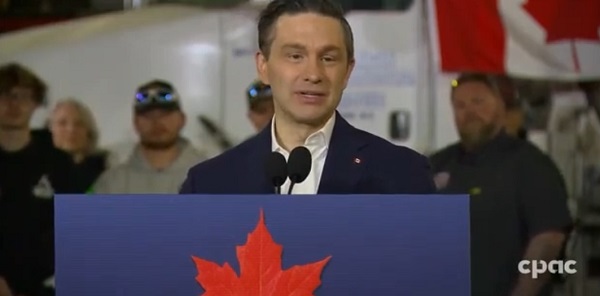
 2025 Federal Election2 days ago
2025 Federal Election2 days agoPierre Poilievre Declares War on Red Tape and Liberal Decay in Osoyoos
-

 2025 Federal Election1 day ago
2025 Federal Election1 day agoMark Carney Comes to B.C. and Delivers a Masterclass in Liberal Arrogance
-

 Business1 day ago
Business1 day agoTrump threatens additional 50% tariffs on China, urges ‘patience’
-

 Alberta1 day ago
Alberta1 day agoProvince introducing “Patient-Focused Funding Model” to fund acute care in Alberta
-

 2025 Federal Election1 day ago
2025 Federal Election1 day agoPoilievre to invest in recovery, cut off federal funding for opioids and defund drug dens
-

 Business2 days ago
Business2 days agoTrump says tariffs on China will remain until trade imbalance is corrected






